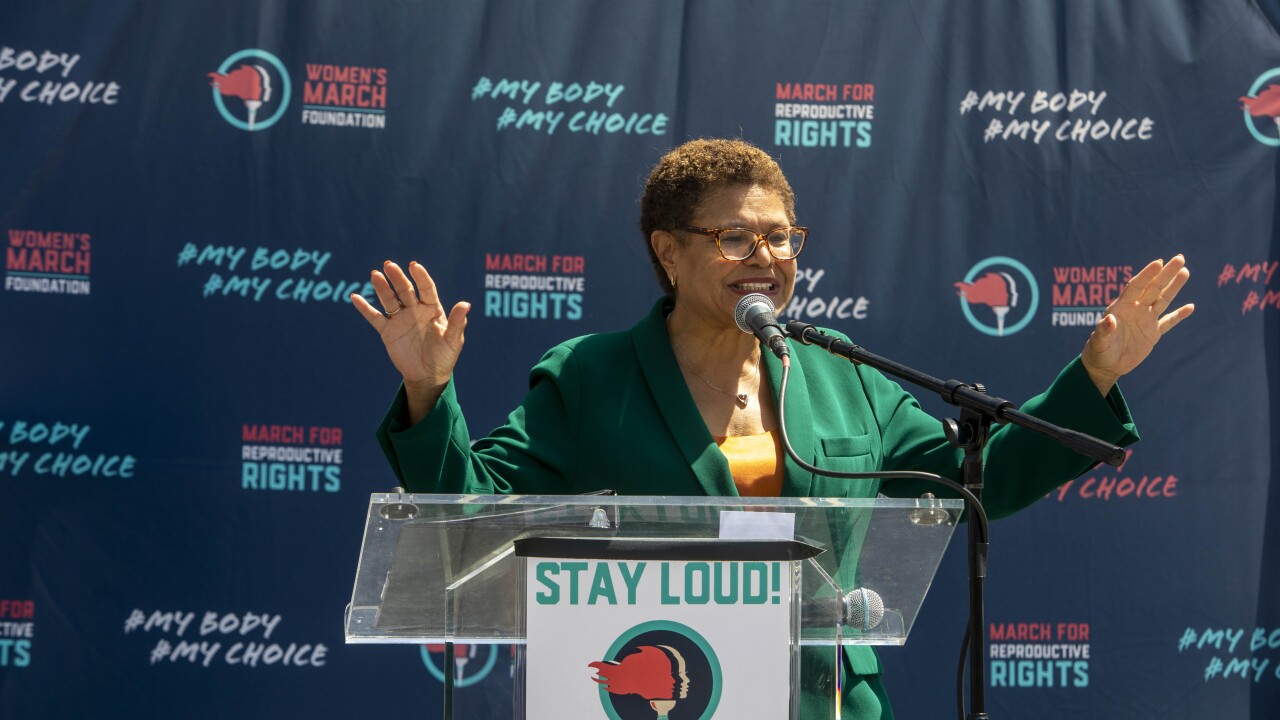The Connector 2000 Association Inc., a beleaguered Greenville, S.C., toll road operator that a year ago defaulted on $329 million of bonds, needs bondholders to approve a tentative restructuring plan to exit bankruptcy.
The plan was hammered out last November between South Carolina, the association that operates the Southern Connector toll road, and a handful of institutional bondholders. If approved, the Connector could issue new bonds in April.
Disclosure documents detailing the restructuring plan have been sent out and bondholders have until March 4 to return a ballot on the proposal, according to court documents. A hearing has been scheduled for March 25 to confirm the restructuring plan, if it is approved.
The problem is that no one really knows how many bondholders there are. The bonds are book-entry securities without investment certificates and are administered by the Depository Trust Corp., according to bankruptcy documents.
A bankruptcy facilitator has been hired to send out the ballots, but it is unclear how many will actually reach bondholders, sources said.
The worries don’t end at the mailbox. The parties pulling for the restructuring plan to succeed said they are concerned about apathy. What are the chances a bondholder will wade through the mind-bending bankruptcy documents and return a ballot on bonds that were issued 12 years ago?
If not enough ballots come back, bankruptcy Judge David R. Duncan may determine that the restructuring plan does not have the support to proceed. Alternatively, a swarm of previously unknown bondholders may come out of nowhere and object to the restructuring plan.
In most cases, “you get a fairly good response” from bondholders, said James Spiotto, a partner with Chapman and Cutler LLP who specializes in Chapter 9 proceedings.
“It’s all a question of getting the word out there and having enough energy to make contact with the holders,” he said.
Institutional investors, sophisticated in bankruptcy documents, are usually more interested in returning a ballot, Spiotto said. Retail investors may have more trouble understanding the value of their holdings as a result of the restructuring.
Epiq Bankruptcy Solutions LLC has been hired to send out ballots. Epiq declined to disclose how many were sent out, citing confidentiality. Jim Daloia, an associate consultant with the firm, said they were sent to nominee banks — those that hold the bonds for investors.
U.S. Bank NA, the trustee bank for the Connector’s senior bondholders, said in a Feb. 3 disclosure statement that investors holding about 40% of the senior bond principal outstanding are expected to vote in favor of the restructuring.
For the restructuring plan to proceed, two conditions must be met. First, a simple majority of the voters must approve. Second, two-thirds of the dollar amount from the votes received need to be in the affirmative.
If the restructuring plan is successful, the Connector 2000 Association will issue 120 new Cusip numbers for bonds that will mature serially from 2012 to 2051. The final maturity on the debt will be extended by 12 years. In all, the plan reduces the association’s outstanding debt to $148 million.
The bonds will not need new documents and will not be rated, a source said.
When the Connector filed for Chapter 9 bankruptcy last June, the South Carolina Department of Transportation objected and filed a suit challenging the toll road’s status as a municipality.
The SCDOT objected because of its subordinate position to bondholders for the Connector’s meager toll revenue. Under the original agreement, bondholders received funds ahead of the department. But the limited toll revenue almost guaranteed the agency would not see any funds.
Under the restructuring plan, the SCDOT’s position in the “waterfall” of toll revenue is moved up so that it will receive some revenue before bondholders are paid. Overall, the department will get 10% of toll revenue, up to $82 million over 40 years. The agency said it needs $10.4 million annually for maintenance.
The restructuring has the support of the SCDOT, which has dropped its challenge to the Connector’s Chapter 9 status.
Subordinate bondholders would see their principal reduced to $71,982 from $3.1 million under the restructuring.
The Connector association issued Series A and B senior bonds, plus Series C subordinate-lien bonds, in February 1998 and the toll road opened eight months early in March 2001. But toll revenue never came close to the initial estimates made by Wilbur Smith Associates, a Columbia, S.C.-based transportation and infrastructure consulting firm.
Even with a successful restructuring of the debt, bondholders are still dependent on the Connector’s stubbornly weak toll revenues. In 2010, it collected $5.3 million — below revised revenue estimates. A May 2009 revenue projection report by Stantec Consulting Services Inc., on which the restructuring plan is based, estimated the road would collect $5.8 million. The Connector’s 2009 revenue total was $341,260 below the Stantec estimate.
The success of the restructuring will depend on the region’s economics. Based on the way the toll road is situated, Greenville commuters have toll-free alternatives to bypass the Connector. Toll rates are scheduled to increase in 2012 and will increase every four years going forward.
A winning season for the Clemson University football may bolster toll road traffic. The Stantec report said traffic is higher during autumn months as fans travel along the Connector for home games. In 2010, October was the road’s strongest month for revenue.
Some of the Connector’s bonds continue to trade. On Dec. 23, a customer sold $575,000 of Series A bonds maturing in 2038 for 14.5 cents on the dollar. That’s down from almost 20 cents on the dollar in December 2009 for the same maturity.





